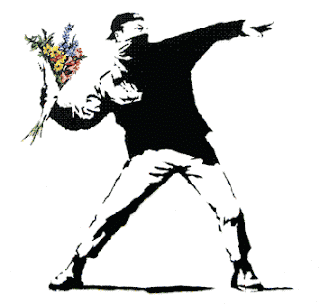Week 5 - Pluralism and the Treat of Waitangi
In teaching week 5 you will discuss pluralism and the Treaty of Waitangi in your tutorials.
Use this discussion, the notes in your ALVC book and the Internet to respond to the following
questions;
1. Define the term 'pluralism' using APA referencing.
"Pluralism in art refers to the nature of art forms and artists as diverse. The cultural context of art is all encompassing in its respect for the art of the world's cultures. Inclusion of individuals of differing ethnicity's, genders, ideologies, abilities, ages, religious, economic status and educational levels is valued. Pluralism honours differences within and between equitable groups while seeing their commonalities." (Cadwell,1999)
2. How would you describe New Zealand's current dominant culture?
New Zealand's culture is largely inherited from European and British Custom, combined with Maori and Polynesian tradition, amongst these we also have Chinese, and Indian so there isn't really a majorly dominant culture. The Maori, are known as the indigenous people of Aotearoa and first arrived here from their homeland of Hawaiki, over 1000 years ago on voyaging canoes (waka hourua). Today Maori people live all over New Zealand and are always involved in keeping their culture and language alive. Since the beginning of the Maori culture, the Marae has been used as a meeting place, as well as a cultural and spiritual place to seek guidance, just like other religions go to church. ( I'm not saying Maori do not attend churches).
3. Before 1840, what was New Zealand's dominant culture?
Native Maori culture was the dominant culture of New Zealand, this was before the Treaty Of Waitangi was signed.
4. How does the Treaty of Waitangi relate to us all as artists and designers working
in New Zealand?
Just for people to live in New Zealand, is why it relates to us as artists and designers. New Zealand has a large background, the Treaty of Waitangi is obviously part of it so for us to uphold the meaning behind it is very important for us as New Zealanders. What us as artists & designers produce should be and represent what is respectful and what isn't in terms of being disrespectful or offending our New Zealand Culture.
5. How can globalisation be seen as having a negative effect on 'regional diversity' that leads to a 'homogenized world culture' in New Zealand in particular? (ALVC2 handbook page 52, http://searchcio.techtarget.com/definition/globalisation)
'Globalization is the tendency of business, technologies, or philosophies to spread throughout the world, or the process of making this happen.' (A.L.V.C2 2012)
Maori Culture being very unique to New Zealand is something that hasn't been seen by anyone before, which allows it to be presented to the world, as one would be put in the limelight. Although, Maori Culture can be used as marketing and tourism, because of its uniqueness. Which makes the Cultural Importance seem less.. important. This is why Globalisation can have a negative effect on 'regional diversity' that leads to a 'homogenized world culture'.
6. Shane Cotton's paintings are said to examine the cultural landscape. Research Cotton's work 'Welcome'(2004) and 'Three quarter view ' (2005) to analyse what he is saying about colonisation and the Treaty of Waitangi.
Shane Cotton's work have a more modern sense/interpretation to tradition Maori art in the works Welcome (2004) and Three Quarter View (2005). "Welcome" (2005) was part of Shane's second series of Lithographic prints, Gow Langsford Gallery said "delicately delineates images that have become synonymous with his work"/ His works involve what is known as "the conversational motif" that surrounds 'Marked Heads' or 'Upoko Tuhituhi'. When i look at Shanes work i can see references to after-life, death and heaven, this all can be seen as Cotton's attempt to keep the memory and identity of these ancestors from the Maori Culture alive.
'Three Quarter View' features a 'Moko' which is a facial tattoo. The work is a artistic representation of the British flax trader Barnet Burns, and the decision that he made - to live amongst the Maori during the 1830's. What inspired Cotton to do this piece, was a 19th century etching that was done.Cotton has used 'Avian Imagery', we know this because of the Sparrow and the Golffinch being present in this work. 'The avian motif has particular importance in Maori cosmology and the goldfinch symbolises the passion of Christ in western religious art'. (Ron Radford, 2008).
His depiction greatly differs, however, Cotton removed anything that would show Burns' British Culture. To show this, he has only shown the silhouette of Barnet's face, with the skin and moko covering it in two different shades of blue.
'Welcome' (2004) Shane Cotton
http://www.printsandprintmaking.gov.au/catalogues/work/52293/shane-cotton-welcome.aspx
 | |||
|
7. Tony Albert's installation 'Sorry' (2008) reflect the effects of colonisation on the aboriginal people of Australia. Research the work and comment on what Albert is communicating through his work, and what he is referring to. Describe the materials that Albert uses on this installation and say what he hopes his work can achieve.
Tony Albert's 'Sorry' (2008) represents a very important day in Australian History, this day marked the event of Kevin Rudd offering a formal apology to the Indigenous people of Australia; 13th February, 2008. He has made this work and achieved a visual expression of the emotion that was felt on the very day. In the work, features a range of different objects and facial expressions - these all represent the elements stolen from the Indigenous people. How ironic is that though, the most significant and joyous event in Australian history, was merely an apology.
8. Define the term 'kitsch'.
9. Explain how the work of both artists relates to pluralism.
Tony Albert | Australia b.1981 | Girramay people | Sorry 2008 |
Found kitsch objects applied to vinyl letters | 99 objects :
200 x 510 x 10cm (installed) | The James C Sourris Collection.
Purchased 2008 with funds from James C Sourris through the
Queensland Art Gallery Foundation | Collection: Queensland Art Gallery












